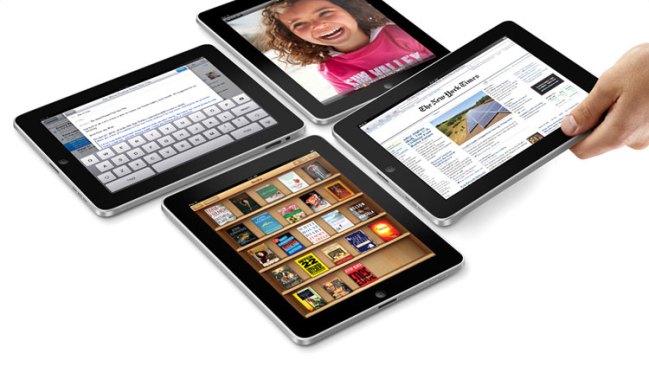
I was at an Intel sales event this week with a bunch of analysts, and several of us got to talking about Apple, and how confident the company was in the iPad. Despite an army of competitors emerging this year, Apple remains assured that they’ll all look second-rate compared to the iPad and iPad 2. Apparently there is method to their madness, and a number of us have been hearing other OEMs complain that they just can’t get a comparable product to market for anywhere near the same price. They do plan to have smaller products to market at a lower price, but we are working from a rumor that says Apple has a strategy to deal with that problem as well. In addition, a number of us have heard of yet another enhancement the iPad 2 is likely to get.
Let’s talk iPads today!
Apple owns the 10-inch market
Apparently, at the core of Apple’s confidence is the belief that they have virtually locked up the vast majority of 10-inch touchscreen capacity through this year. Only Apple thought that tablets would be successful early on, and apparently no one (who is talking) did the same. As a result, you have a lot of vendors bidding for a constrained resource, and that has caused the price of the remaining capacity to skyrocket. This means that no one can get close to Apple’s price, even if they forego profit. Apple has effectively locked them out of the market.

The 7-inch counter strategy
The counter strategy from a number of OEMs has been to build a 7-inch tablet and sell it at a lower price to compete with the iPad. We saw the beginning of this when Samsung reduced the price of the Galaxy Tab sharply, and started to sell them in higher volumes as a result. Still, at best the Galaxy may have sold 10 percent of what the iPad did, and even that number is likely way overstated. In effect, the Galaxy became what the Zune was to the iPod: a nicely built, but largely uncompetitive offering in a market Apple literally owns.
Countering the counter strategy
Even this small advantage may go away when the iPad 2 ships. Apparently, Apple is considering dropping the price of the entry level iPad to equal the price of many of these 7-inch tablets. That would once again give folks a choice between something big from Apple, and something small from Samsung, for the same price. I expect most will continue to choose the Apple.
 HP’s wild card
HP’s wild card
HP is expected to launch the new Palm Tablet in a few days (February 9). HP has historically been just as aggressive as Apple is in terms of locking up supply for a new product well in advance, and because HP sells far more PCs, it actually has more bidding power than Apple does. There is a chance that HP already tied up screen capacity to make a real run at Apple’s iPad dominance, but it would appear to be the only one, and even that possible advantage is just speculation. The company co
ld just as easily be SOL like every other competitor.
A Retina iPad?
Several of my peers are convinced that Apple will launch a new, high-end iPad that will have a very high-resolution Retina Display sometime this year. Apple likes premium offerings, and because no one can seem to create a product anything like the iPad for a similar price, Apple actually has the value product this round. That would mean Apple is inclined to create a better premium product and drive people to it, while the lower-end offering with the less-attractive display is used for volume, and to assure Apple continues to dominate this segment. If Apple does this, much as it did with the iPhone 4, it will likely double the resolution over the base model with this display. On the other hand, Apple doesn’t like a complex line, which means that if it does a high-end display, it may drop it into the entire iPad 2 line of products.
Wrapping up: Apple has every reason to be optimistic
In the first half of the year, only HP and possibly Research in Motion (RIM) have the positioning to take a bite out of Apple, and few (as in none) believe that RIM has the chops to do this. HP likely is anticipating Apple’s move and should be able to provide a surprise, but “could” and “does” are two very different words. HP, to my knowledge, has never upset Apple’s apple cart before. With the iPad expected to come out before June and possibly as early as March, we’ll know on Feb. 9 whether HP even has a shot. I think HP has a long shot, but my peers don’t even give them that much.
In the end, Apple appears to have a good reason to be confident.
Editors' Recommendations
- Apple’s new iPad Pro keyboard is a bigger deal than you think
- Does the iPad Air (2024) have a 120Hz display?
- Apple finally fixed my biggest issue with the iPad Pro
- iPad Pro (2024) vs. iPad Air (2024): the difference is clear
- Best Apple deals: Save on AirPods, Apple Watch, iPad, MacBook



